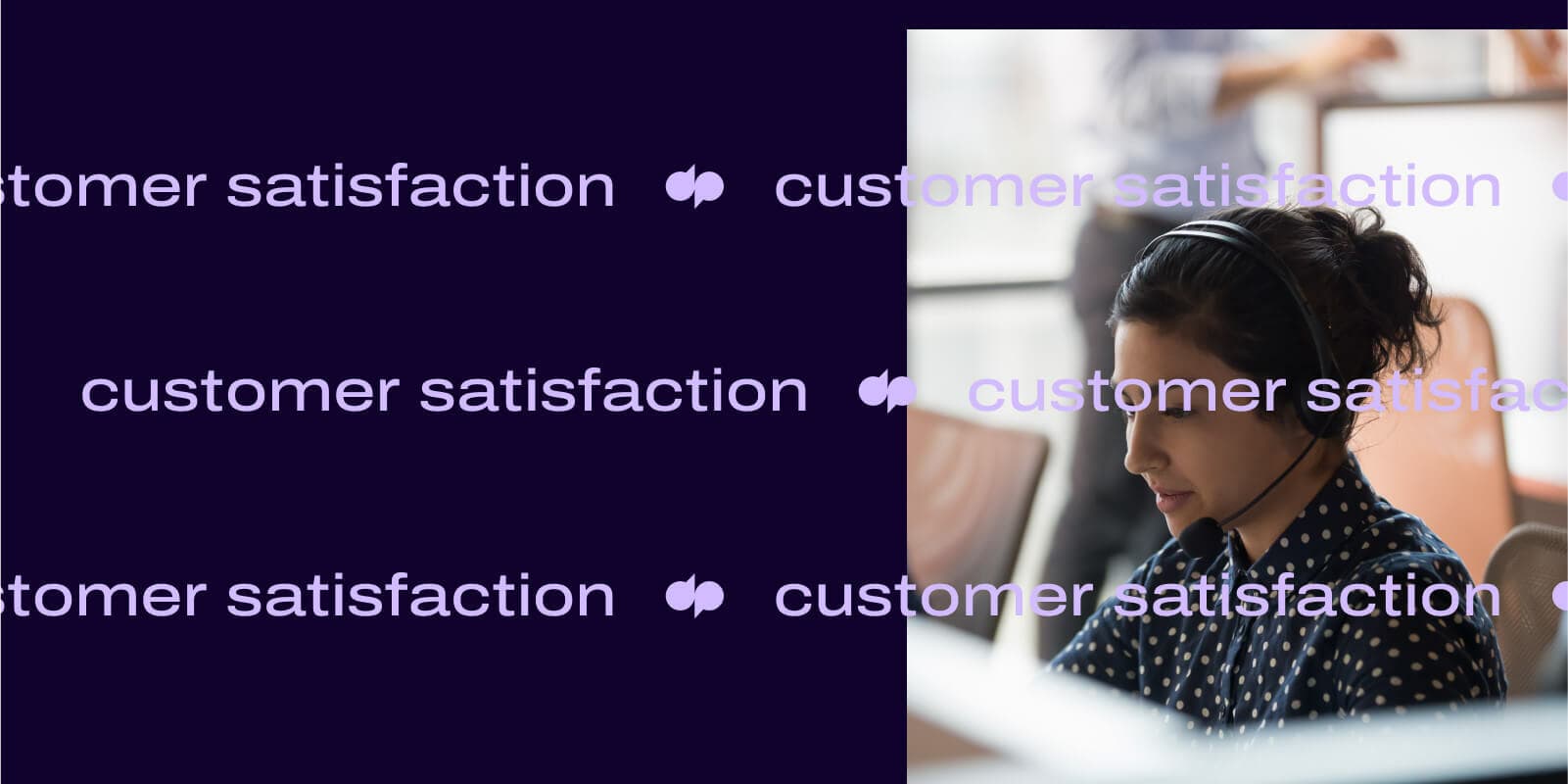
Tags
Share
Customer feedback is important. There’s no argument about that. But what type of customer feedback should you collect? When should you collect it? What happens if you have conflicting feedback?
Those are all survey questions that customer support teams tackle every day. And three of the most commonly used surveys and metrics are: CSAT, NPS, and CES.
So, which should your business use—and how should you go about collecting and using these customer insights?
I’ll be walking you through exactly that.
What is a customer satisfaction (CSAT) score?
A CSAT survey is typically sent to customers as a follow-up question after a customer interaction, like a call to customer support or an online purchase.
For example, with Dialpad’s contact center platform, you can set up a CSAT survey to automatically play at the end of a customer call with just a few clicks:
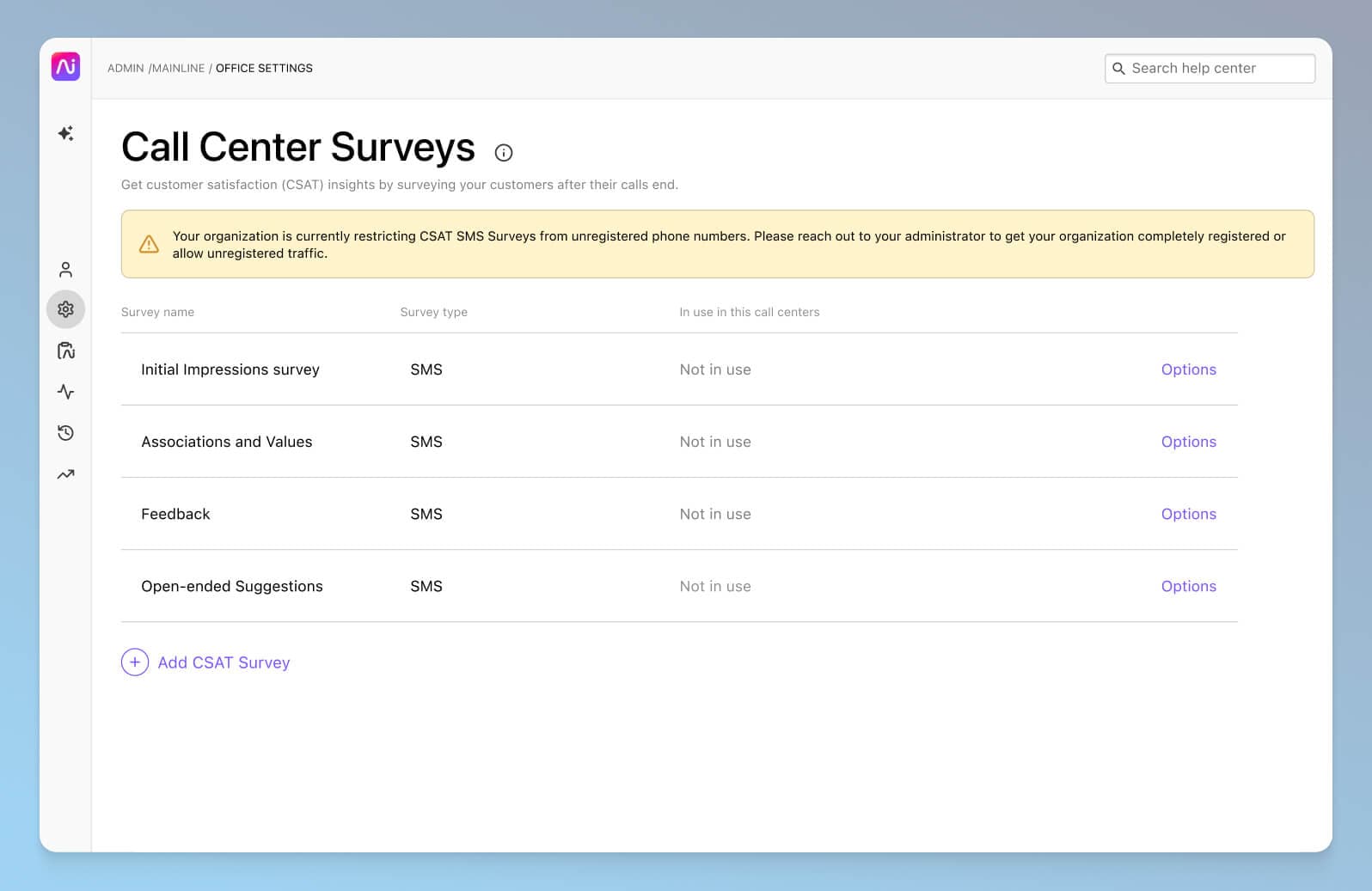
Today, CSAT surveys are one of the most popular tactics that companies use to assess and improve specific interactions in the customer experience.
Something to note is that one of the biggest challenges with CSAT scores is not a lot of people actually fill out those surveys.
In fact (depending on the industry and specific business of course), we've found that on average only about 5% of customers actually fill out CSAT surveys. On a related note, usually only the angriest—and happiest—customers actually bother to respond to these surveys, which means your CSAT answers are likely to be very skewed and not representative of how your customers feel overall.
Dialpad's industry-first Ai CSAT feature is designed to solve exactly that. Not only can our Ai transcribe calls and analyze sentiment in real time, it can also infer CSAT scores for 100% of your customer calls thanks to its hyper-accurate transcription feature. The result? A much more representative sample size for CSAT scores, and a more accurate understanding of how satisfied your customers really are:
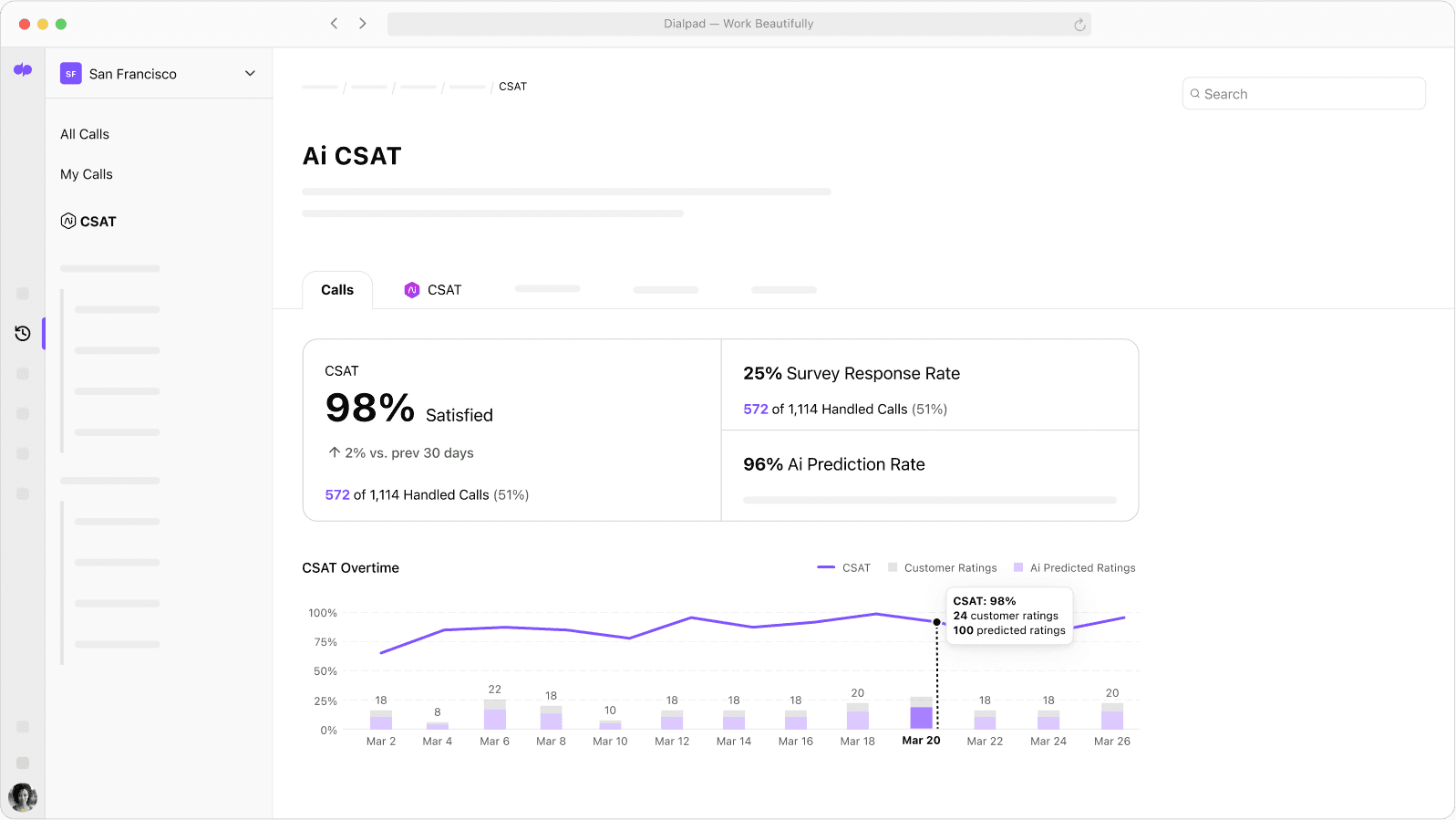
It opens up a ton of new possibilities for gathering customer intelligence, using a source of data that you already have for free: your everyday customer conversations.
What is a Net Promoter Score (NPS)?
Your NPS score is a metric that indicates how likely your customers are to promote your brand through word-of-mouth and reviews—or to be major detractors.
To get this data, you’d run an NPS survey. You can do it through email or a phone call, and typically you only need one question to gauge a respondent’s overall impression of (and loyalty to) your brand.
What is a Customer Effort Score (CES)?
A Customer Effort Score (CES) is a metric obtained from surveying your customers that tells you how difficult or easy it was for them to perform a particular task, like buying a product or troubleshooting an issue.
CSAT vs NPS vs CES: Differences in measuring customer experience
While they can all be valuable metrics, a CSAT score, NPS, and CES will give you very different snapshots of the customer experience.
A customer satisfaction survey typically tells you how happy or unhappy customers are with a specific interaction. An example of a CSAT question would be “How would you rate the customer service you just received?” The answers you’ll get will give you a good idea of how smooth each touchpoint in your customer experience is.
With NPS, on the other hand, you’re quantifying a relational score between your brand and customer base. Here, you’re trying to figure out your respondents’ brand perception and brand loyalty.
With CES, you're generally trying to figure out if there are gaps in your customer experience or user flows that are making it harder for customers to do what they want to do. In some ways, it's a more narrow metric that helps you drill deeper down into a certain step in your customer journey.
✨ Provide a better customer experience
Grab the Contact Center Playbook, which breaks down everything you need to know, from setup to staffing to optimizing—with examples from real contact center teams across different industries.
How to measure CSAT vs. NPS vs. CES
Net promoter scores and customer satisfaction scores differ in the way they measure customer loyalty—and also the scales that they use.
How is a CSAT survey scaled?
The standard scale for a CSAT survey goes from one to five, but can really be whatever you find most informative. Sticking with the standard 5-point scale, one would be the worst or “very unsatisfied” while five would be the best or “very satisfied.”
Respondents who give a four to five rating are your satisfied customers. Any other response indicates neutral or worse.
To calculate your CSAT score, tally up the fours and fives, divide by the total number of responses, and multiply by 100. The formula would look like:
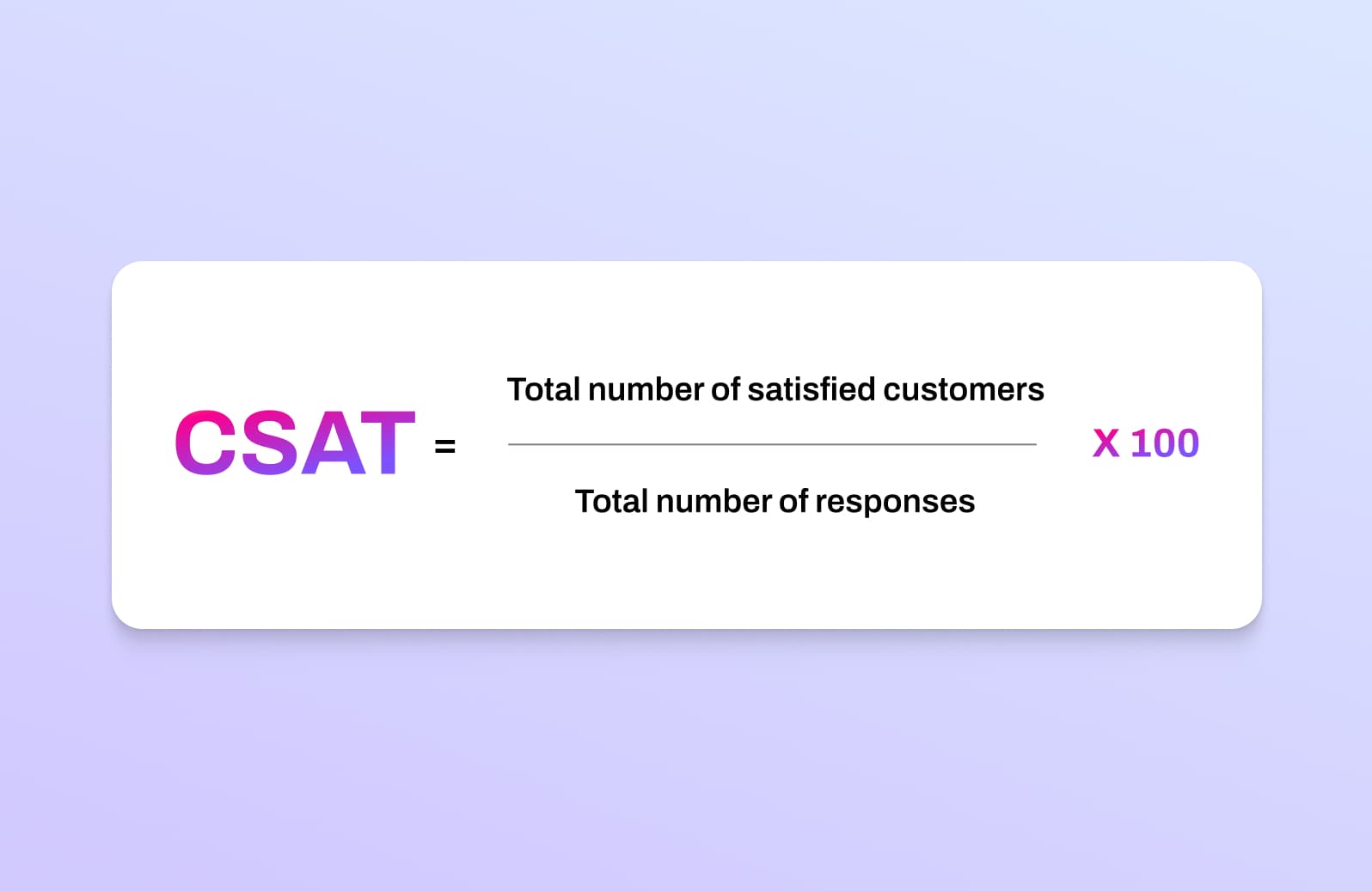
For example, say you received CSAT survey responses from 100 customers, and 70 of those are 4s or 5s. Your CSAT score would be 70%.
CSAT is industry-specific, but a good score for most industries starts between 75% and 85%.
What is the scale for an NPS survey?
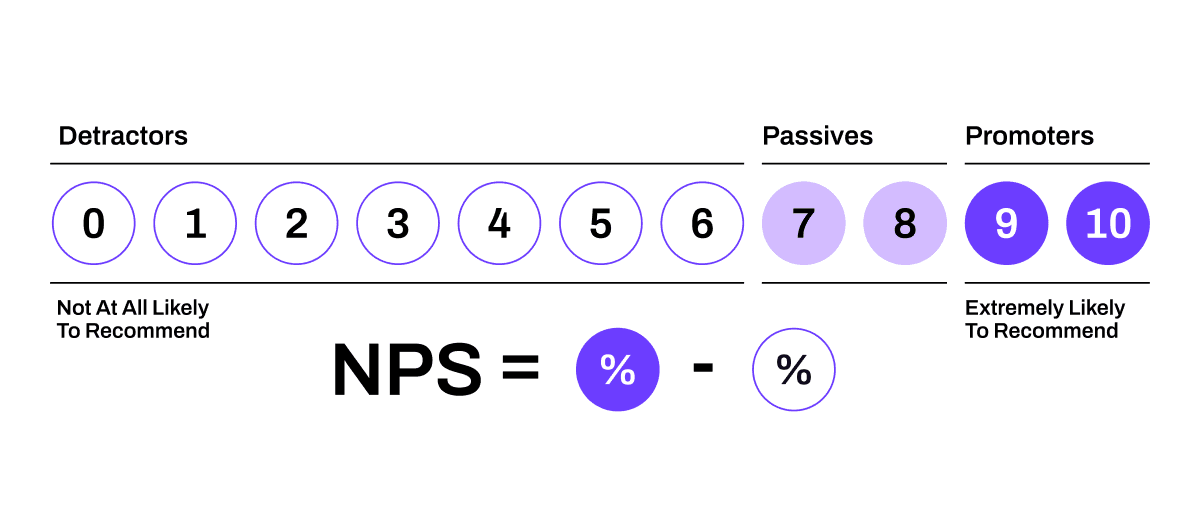
Unlike CSAT, the net promoter score metric is typically scaled from zero to 10. Customers will be asked a question like “How likely are you to recommend [X] brand to family, friends, or colleagues?” They’d then choose a number, 10 being the most likely and zero being the least likely.
Survey responses of nine and 10 indicate your most loyal customers. Customers who score a seven or eight are neutral or “passive.” Anything between zero and six represents a detractor. Like CSAT, calculating your net promoter score is relatively easy. To get your total scores, just take the percentage of promoters and subtract the percentage of detractors.
Any score above zero is considered “good” as it means you have more promoters than detractors, but if you’re ambitious, you should aim to get to 30 or above.
On what scale do you measure CES?
You'll most often see CES measured on a scale of 1 to 5, or a scale of 1 to 7, with the option to rate how difficult or easy a task or interaction was from extremely difficult to extremely easy:
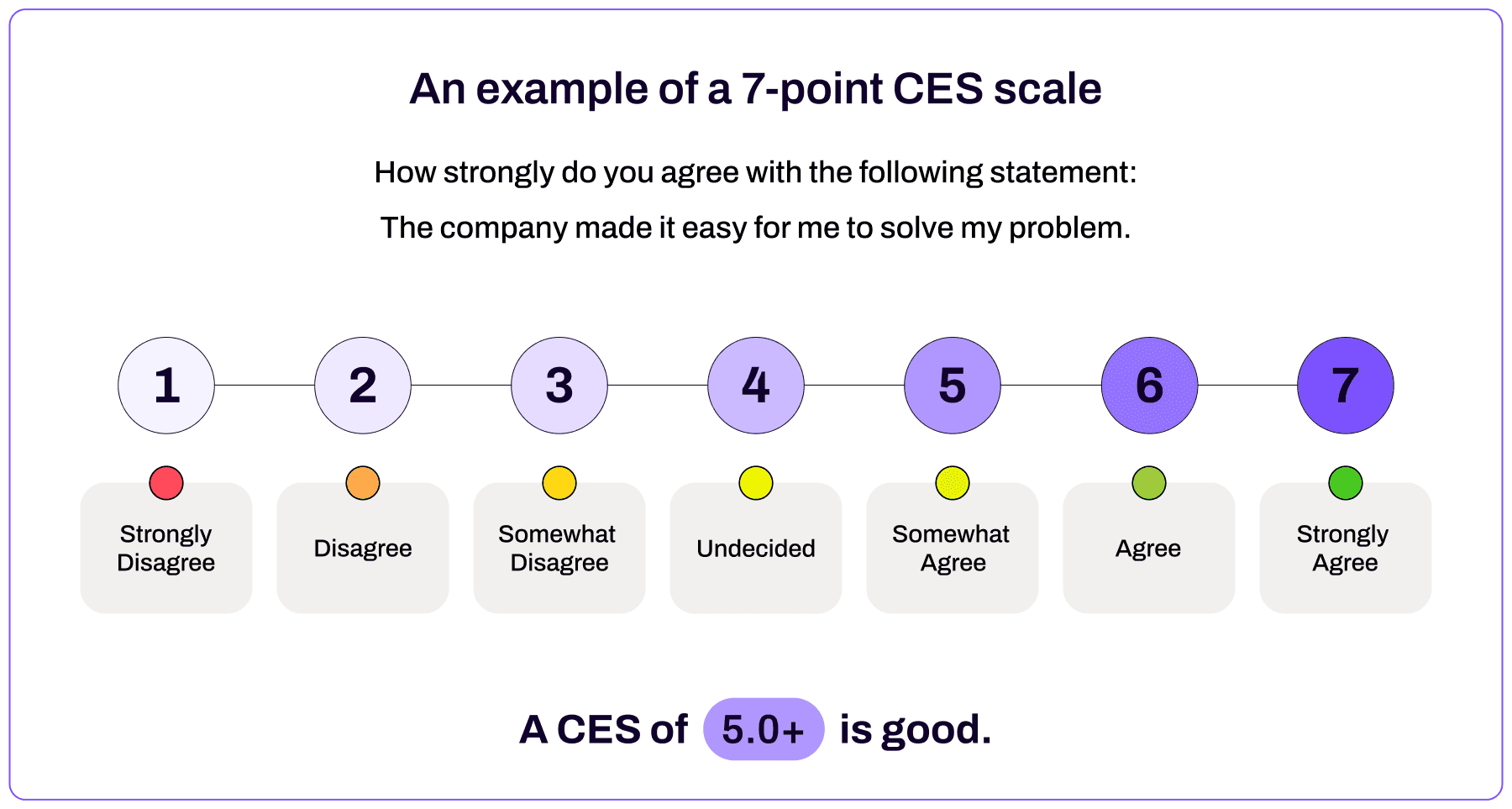
You could just have a numerical scale, but to make the survey more interactive or fun for customers, some businesses might add emojis or visuals to the scale.
NPS vs. CSAT vs. CES: When to use each one
Run a CSAT survey if you want to understand how satisfied customers are on a granular level and of you want to measure customer satisfaction about an interaction they had with your business.
Measure NPS if you want to:
Get a quick pulse check on how your organization is performing when it comes to customer loyalty
Understand at a high level how likely your customers are to promote you via word of mouth to their communities
Measure CES if you want to analyze different steps or stages in your customer journey to see if there are any improvements you could make.
👉 Dialpad tip:
There are industry benchmarks that you can use to compare how you’re doing against other companies, but keep in mind that things like company size and maturity play a role here as well. If your CSAT score is 75% and your industry standard is 83%— but you’re just starting to build out a very new customer support function, things may not be as dire as they seem at first!
Going beyond: More customer service KPIs that you should track
CSAT, NPS, and CES are great for looking at customer satisfaction at micro or macro levels. Any organization should employ a customer loyalty strategy that employs both metrics. However, there are several other helpful KPIs that businesses should consider tracking too.
1. Customer lifetime value (CLV)
Your CLV measures the revenue that’s likely to be generated during the lifetime of your customer relationships. The larger your CLV, the better. (It goes without saying that CLV and customer loyalty are positively correlated.)
To increase your CLV, you’d typically have a customer success team or salespeople who focus on upselling and cross-selling to existing customers.
2. Churn rate
For software and subscription-based companies, the churn rate tracks customer turnover over a given period. The average churn rate varies by industry, but 25% is about as high as it gets. This means that the average business expects around one in four of its customers to take their business elsewhere every year.
This number dictates the minimum number of yearly new customer acquisitions your business needs to make—just to stand pat! If you have great customer support and customer experience, it’s possible to have negative churn, which is a rare achievement that every company strives for because it means the new revenue from your existing customers is greater than the revenue you lost from customers leaving or downgrading their accounts.
3. Bonus: Qualitative data
If you operate a call center or contact center, you’ll be able to gather plenty of useful customer service analytics from customer interactions on calls and other channels.
These are some of the most valuable insights you can have, since this is feedback coming straight from your customers. The challenge is in collecting and using that data. This is something that Dialpad is designed to help with. Besides its contact center analytics, it also transcribes calls in real time, which gives us a ton of useful call recordings that agents can learn from:
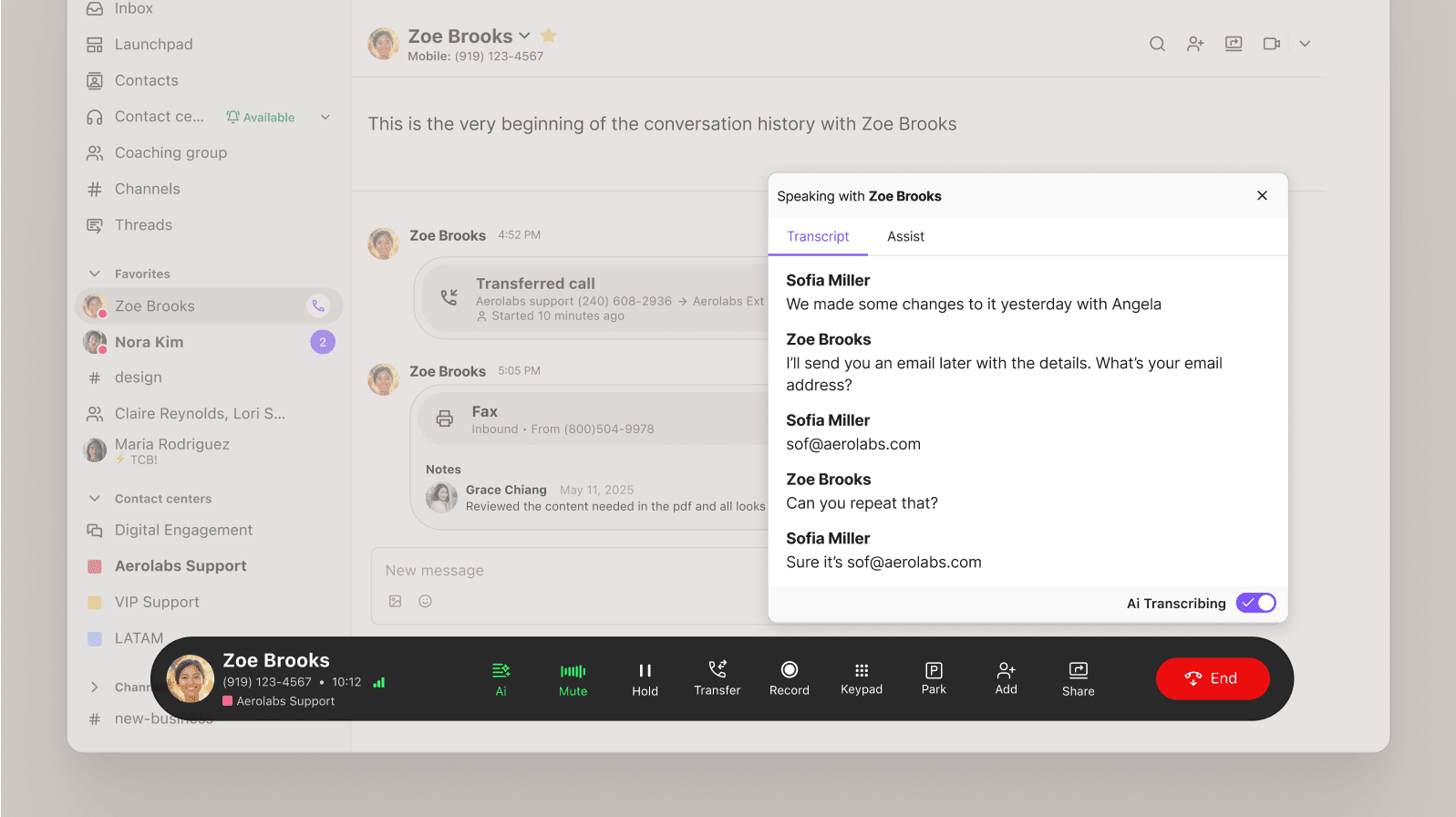
We can even create coaching playlists (like a Spotify playlist) and add the best conversations to different types of playlists (maybe there’s one for “how to onboard a customer” and another for “how to handle an irate customer”) so that agents can listen to these and learn on their own time.
Why measure these metrics and KPIs?
Lower customer churn, increased retention
In a perfect world, your customer churn rate would be zero. In reality, it depends on your business model, the industry you’re operating in, and the global economy. But by analyzing and acting on key metrics, you’ll go a long way to reducing churn and securing a loyal customer base.
More effective agent training
When you have a good understanding of your customer journey, it can really help you improve your onboarding, create better templates, and train agents more effectively.
For example, if you know that your CSAT scores for your customer support interactions have been struggling, you can take that insight and look for ways to uplevel your agents’ training and tools to empower them to solve customers’ problems more quickly.
A better understanding of customers
Customer satisfaction metrics aren’t just numbers that indicate “good” or “bad.” They can also be incredibly helpful when used with other insights to gain a clear understanding of your customers.
From NPS to customer conversations and live sentiment analysis, there are a variety of ways to analyze your customer experience and look for ways to optimize every touchpoint.
👉 Dialpad tip:
Consider including open-ended questions with your CSAT and NPS questions to give customers the opportunity to elaborate on why they gave you a certain score.
Improve your customer engagement with CSAT, NPS, and CES
If you want to build long-lasting relationships with your customers, strengthen customer loyalty, and increase business growth, then you need to give your customers the best experience you can offer every step of the way.
Use a diverse approach that tracks CSAT and NPS—as well as other metrics. While these are good on their own, they should be backed up by other customer experience KPIs.
Many support teams, like ours, are using Dialpad Support to optimize the customer lifecycle, improve the customer experience, and support flexible working for agents around the world.
Why not check it out with a tour of the product?
See how Dialpad can help you improve CSAT, NPS, and CES
Get a personal walkthrough of Dialpad Support, and see how easy it is to support your agents and supervisors, even when they're working from anywhere. Or, take a self-guided interactive tour of the app on your own first!

